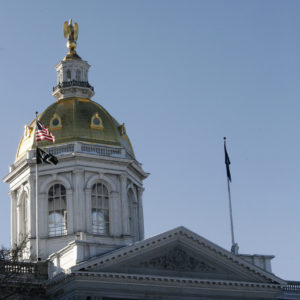Currently, at least 43 states already have lieutenant governors. Now, I know that is not a reason for us to establish such a position. But there is a strong case for doing so, and for doing it the New Hampshire way.
Constitutionally, our current line of succession calls for the state Senate President to replace the governor. That has happened several times, most recently in 2016 when Senate President Chuck Morse replaced Maggie Hassan briefly when the latter was sworn in as U.S. senator. Senate President Ralph Hough replaced Judd Gregg briefly in 1992 when the latter was also sworn in as U.S. senator.
But ponder what happened in 1982, when Senate President Vesta Roy was sworn in as acting governor after the death of Hugh Gallen. These two individuals were of different parties, and that could be problematic. However, Gallen had just been defeated in a reelection bid, having lost the office to John Sununu. But assume Gallen had won that election before passing away. The people would have elected a Democrat, but then a Republican would have taken over. And that presents major problems.
To have a Senate President of one party replace a governor of another party creates many issues. Does the new governor continue to serve as Senate President? How could he or she simultaneously lead both the legislative and executive branches? That’s a serious separation of powers question—a constitutional issue that really demands attention.
Sens. Morse, Hough, and Roy did not resign their Senate seats when sworn in as acting governors. But their tenures of office as chief executive were all very limited and created no short-term issues.
But what if a Senate president needed to serve several months as chief executive? You conceivably could have someone who sponsored a bill in the legislative branch and then later sign the same bill into law as chief executive. Or perhaps vetoing a bill they’d earlier voted against as a legislator.
It utterly goes against Civics 101 and the separation of powers. And New Hampshire is just about the only state in this situation.
Ponder what would have happened had if, God forbid, Republican Gov. Chris Sununu been struck by lightning in 2019. Democrat Senate President Donna Soucy would have become governor to finish out his term. Would she have maintained Sununu’s existing staff, or replaced its members? What would have happened about running the Senate? Could she serve simultaneously in the legislative and executive branches? That’s what Sens, Roy, Hough, and Morse did. They did not resign their senate seats before being sworn in as acting governors. But even if the Senate president removed himself or herself from the senate, they’d retain influence and relationships with senate colleagues that could be untoward.
Further, in 2019 the Democrats had both U.S. Senate seats, both congressional seats, the state Senate, the state House, and the Executive Council. Taking over the governor’s corner office would have given them total governmental control in a very purple state. A similar but opposite dynamic existed earlier when the Republicans controlled most of the government under Democrat Gov. Gallen.
New Hampshire is one of only two states with governors who serve two-year terms, so that mitigates the problem somewhat. But action is still needed. Perhaps if a senate president was elevated to the governor, they would resign their senate seat? But that would disenfranchise around 5 percent of New Hampshire citizens. And what if they didn’t want to resign their seat?
And that action involves amending our constitution to create a lieutenant governor position.
We should do it the New Hampshire way. We should have a citizen lieutenant governor, the way we have citizen legislators. CACR1 calls for the lieutenant governor to receive the same salary as that of the Senate President, which is $125 a year. So, this could be a wonderful example of improving government in the best way—essentially doubling our gubernatorial manpower at virtually no cost. Two governors for the price of one? That’s efficient government. That’s the New Hampshire way.




